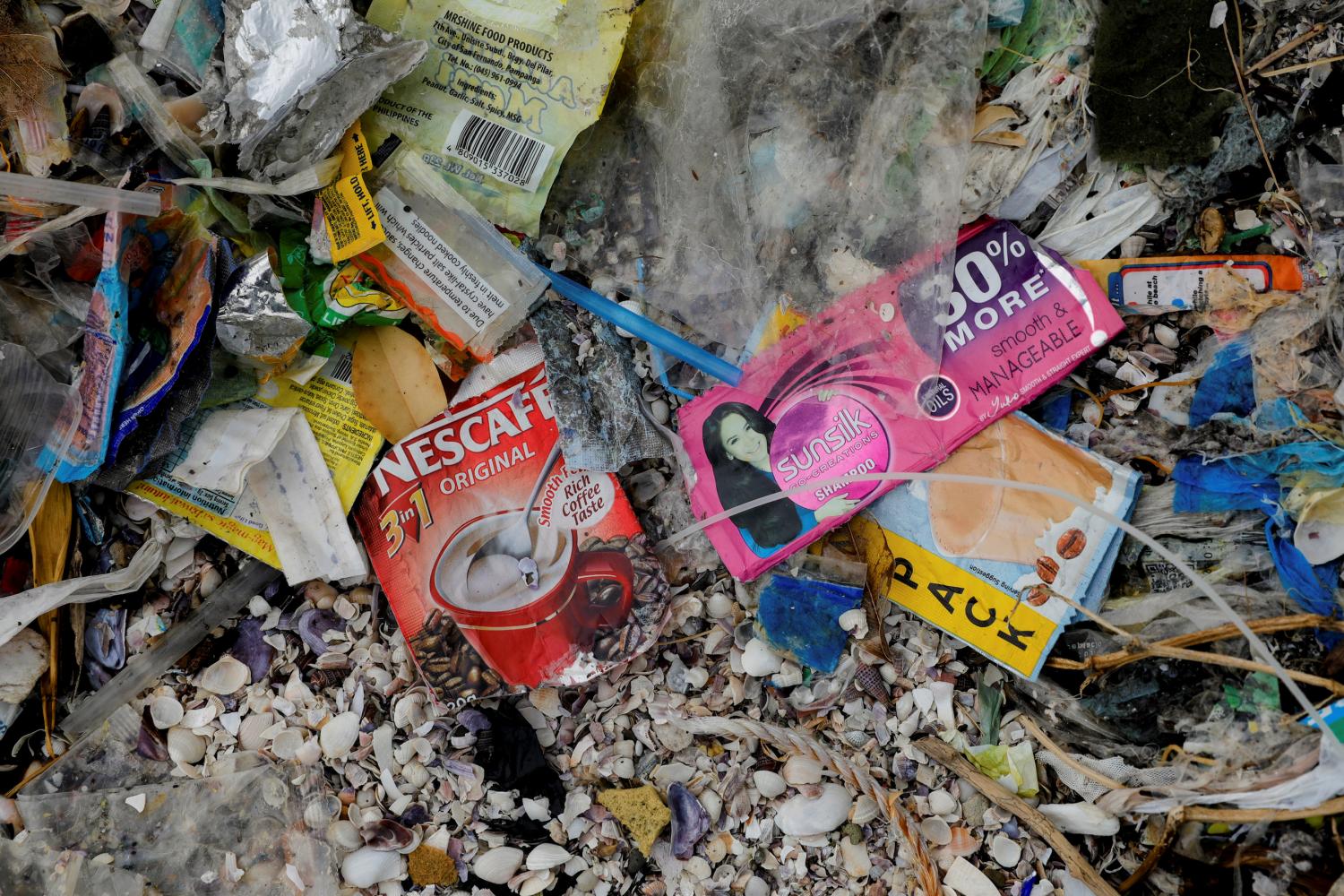
Here's a quick game for the climate-conscious. Try ranking these disposable beverage containers from least to most environmentally friendly: aluminium; glass; paperboard; plastic bottle; plastic pouch.
Unless you're an expert in the subject, your answers are likely a long way from reality. That's a problem. Packaging is a $1 trillion (34.5 trillion baht) market that generates hundreds of millions of metric tonnes of waste yearly -- but our ideas about it are often based more on hunches than solid information.
As the world's production of packaging waste rises to developed-country levels of about 200kg per person, governments will have to play a bigger role in helping people make sense of this mess.
Take the minor kerfuffle in the US this summer after coffee shops started handing out iced coffee in flexible plastic pouches rather than rigid cups. Such packaging is common in Africa, Asia, and Latin America, and the trend may owe something to the vogue for all things Korean. It's still left many Americans affronted and confused. "I just paid $7.50 for this IV bag of iced coffee," wrote one affronted TikTok user, @nolitadirtbag.
The "colostomy bags" are "allegedly supposed to be more environmentally sustainable," another user, @crelyea12, said in a post with more than 175,000 likes. "How? In what way? I'm sorry, Captain Planet himself told us that plastic bags are bad," he added (a reference to a 1990s environmental superhero cartoon.)
The confusion is understandable because the packaging industry and its critics have long traded on dubious claims and questionable judgments that have as much to do with vibes and marketing as solid science.
The apparent ease with which glass is reused, for instance, helps obscure the fact that in environmental terms, it's one of the very worst packaging materials. Plastic's relative novelty and association with the oil industry likewise disguises that it's one of the best, as my colleague Adam Minter has painstakingly chronicled. Sticking a recycling symbol on a carton can bestow a green glow on a product without providing consumers any useful information about how easy the waste is to process.
Take @crelyea12's question. The answer is surprisingly difficult. The argument in favour of such Capri Sun bags -- "flexible packaging," to use the industry jargon -- is that manufacturing them uses about half the energy and less than half the materials used in rigid plastic bottles. At the same time, manufacturing isn't the be-all and end-all. For instance, less than 1% of flexible packaging gets recycled, compared to more than 40% of rigid packaging, according to a 2019 book on the subject.
Once you start delving into the complexities of these things, you quickly find that many of your most cherished beliefs are wrong, and even the most widely-held assumptions (such as the idea that biodegradable plastic has a lower carbon footprint) are questionable.
There are a few simple rules of thumb that consumers can use. Consider weight: Glass is heavy and fragile, so a lot is needed to hold a given volume of product. That results in more manufacturing and transport emissions.
Then there's temperature. Silica needs to be heated to over 1,100°C to produce glass, and aluminium smelters run at about 800°C. Plastic, on the other hand, is blown at roughly the boiling point of water, while paperboard is dried at temperatures cooler than a sauna. That drastically reduces energy consumption.
Finally, consider the challenges of separating materials into the relatively pure waste streams that recyclers need if they're to make a profit. Paperboard cartons, generally a pretty good material in environmental terms, often fall down because they're complicated engineered products, roughly a quarter aluminium and plastic by weight. That means many recyclers can't handle them, pushing them into landfill instead.
The state has a role to play here. In most countries, food labels will give comprehensive information to consumers about a product's ingredients, its allergen risks, and even its nutritional place in a healthy diet. They'll tell you almost nothing about the environmental credentials of the packaging itself, however -- a striking omission that regulation is in an ideal position to fix.
This advice will differ from country to country depending on recycling rates and supply chains. Governments should conduct impartial studies to ensure their citizens have good-quality local data. Much of the research out there has been funded by the packaging industry itself, an obvious conflict that leads even the best-informed consumers to mistrust the information in front of them.
States can also do more to standardise the waste supply chain. The UK recycles nearly two-thirds of its packaging waste, one of the highest rates in the world, thanks in part to laws passed in the 1990s making manufacturers pay the costs of landfill. Those rules are worth emulating.
Of course, the most environmentally-conscious solution to the problem of iced-coffee packaging is normally going to be avoiding waste altogether by bringing your own cup -- or drinking it in the store, using their crockery.
Given that we live in a disposable culture, however, garbage is always going to be with us. If governments are going to treat the health of the environment as seriously as the health of our bodies, they should ensure we have the tools to make decisions about how to deal with it. ©2023 Bloomberg
David Fickling is a Bloomberg Opinion columnist covering energy and commodities.
